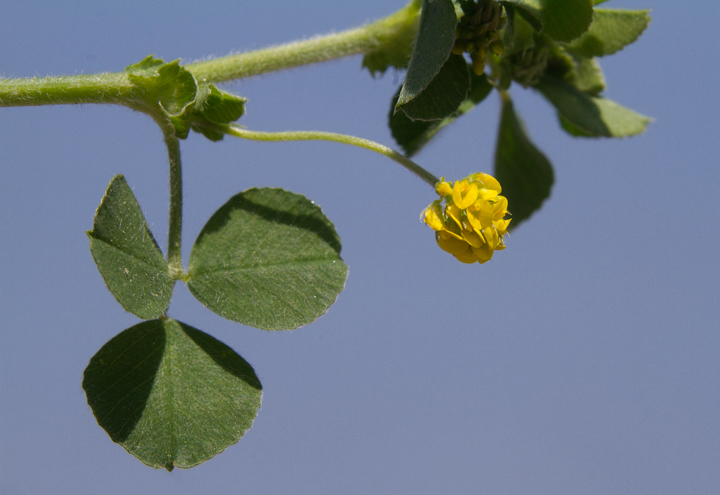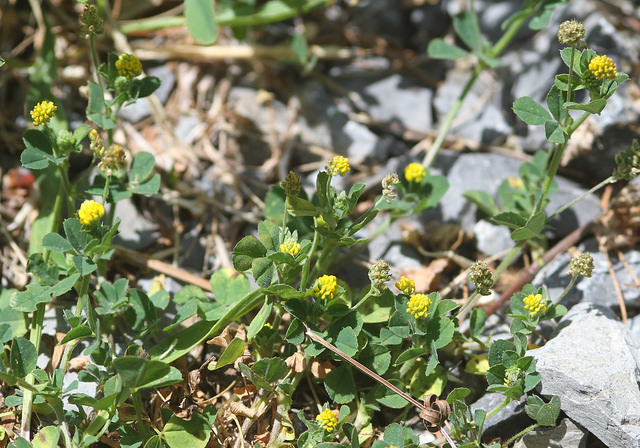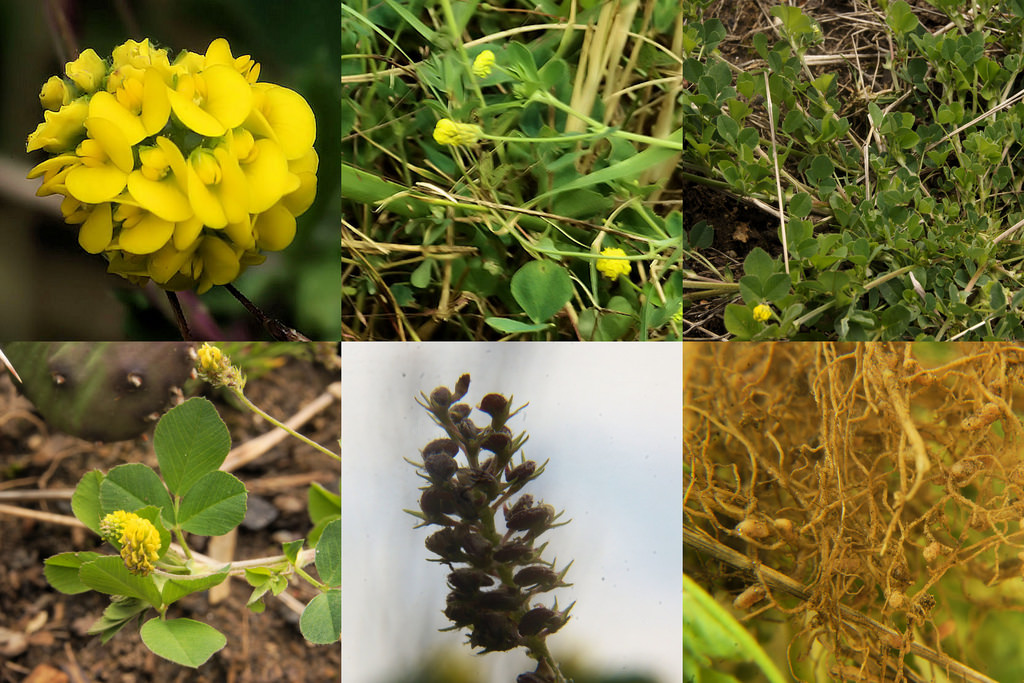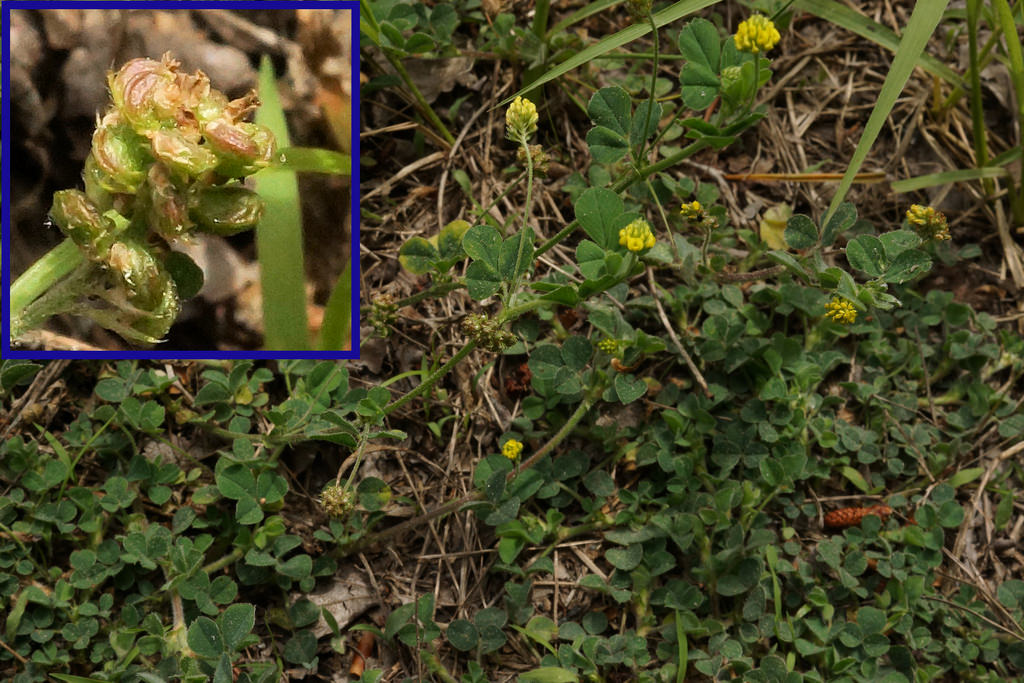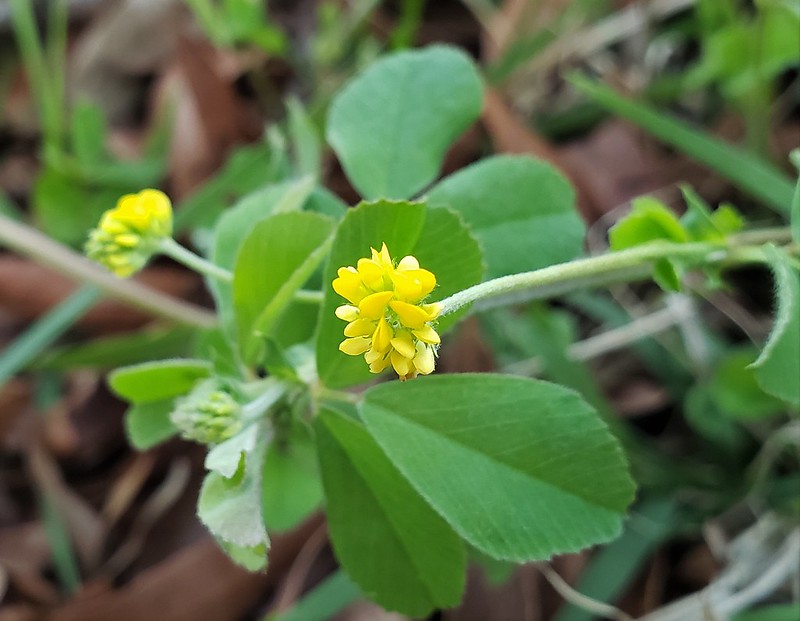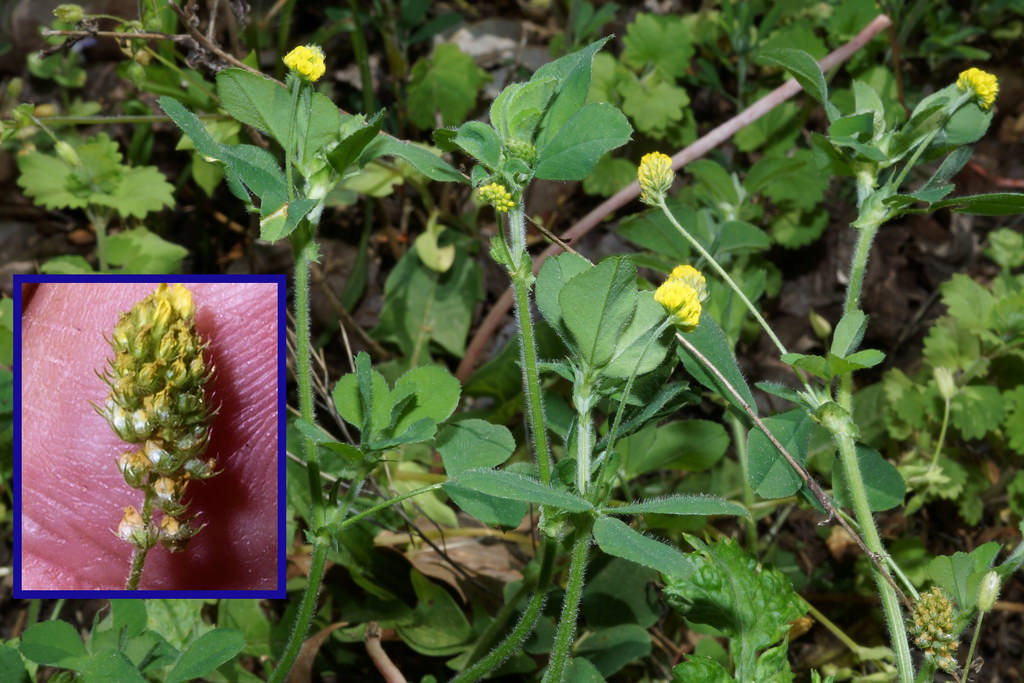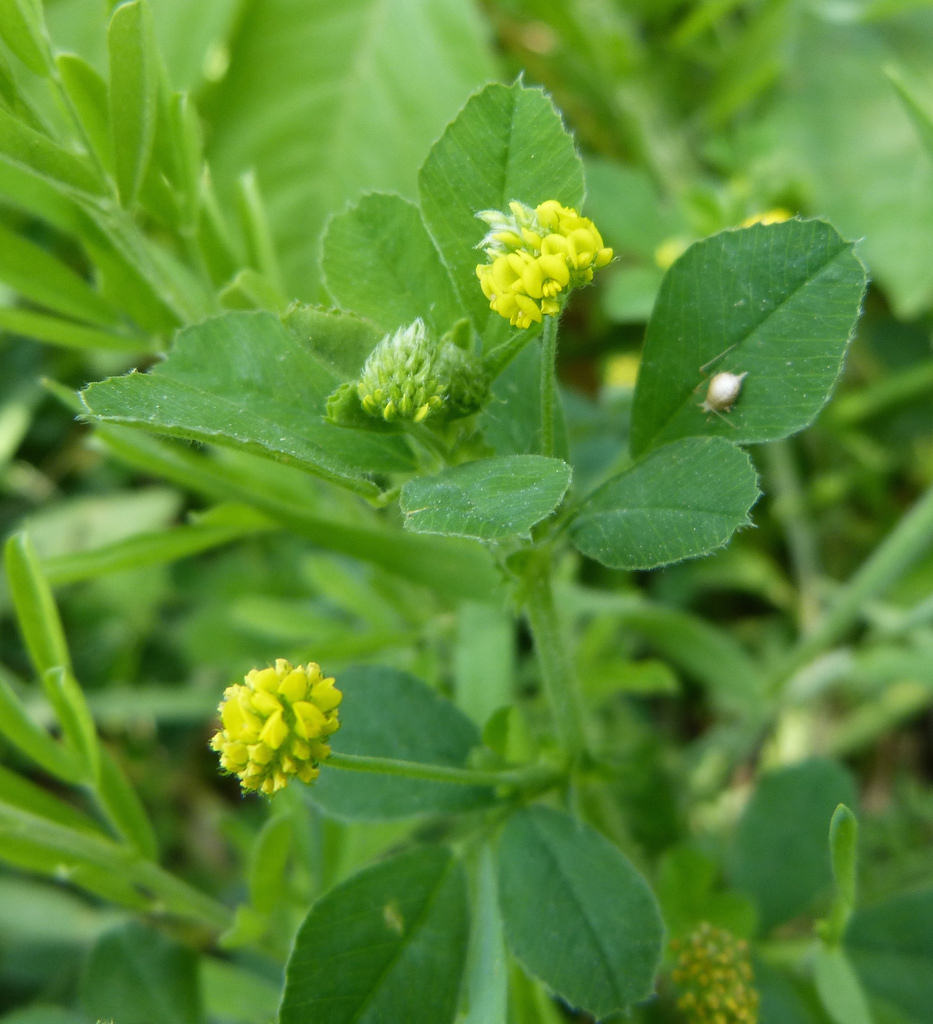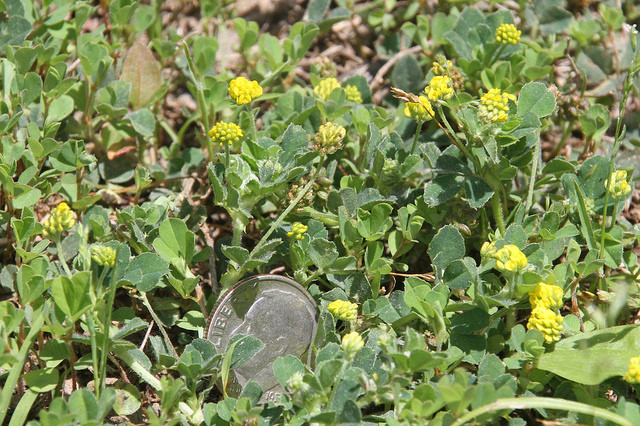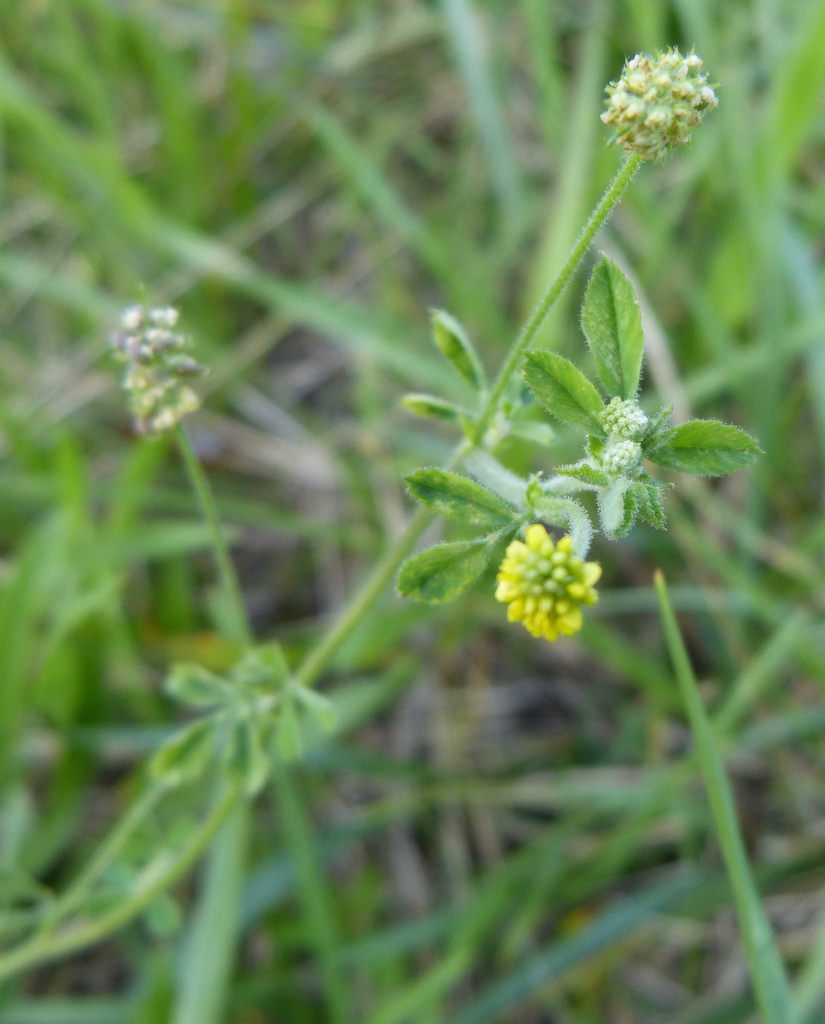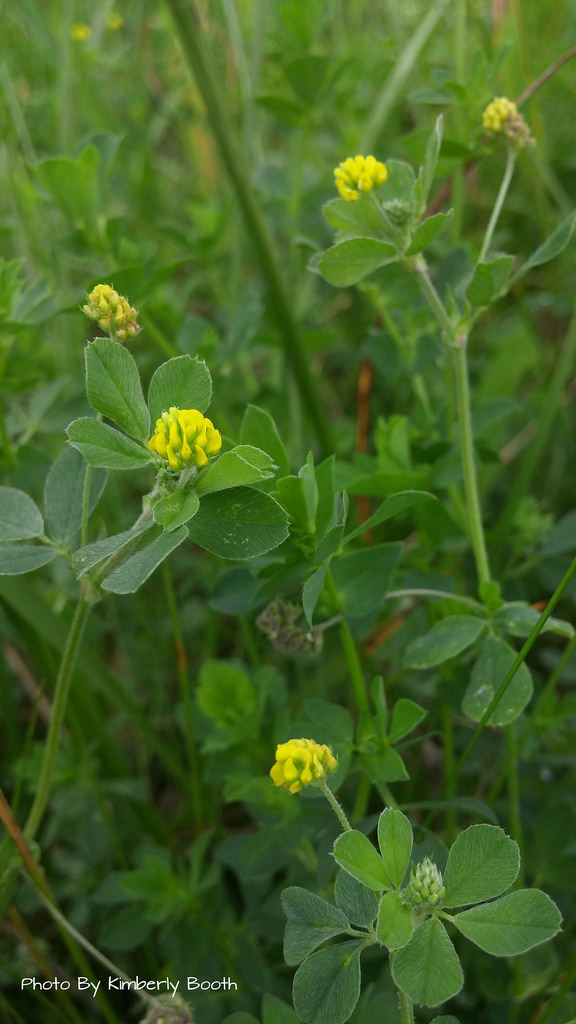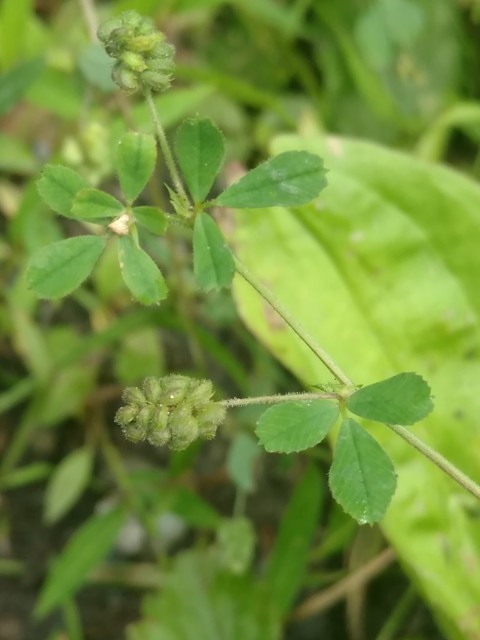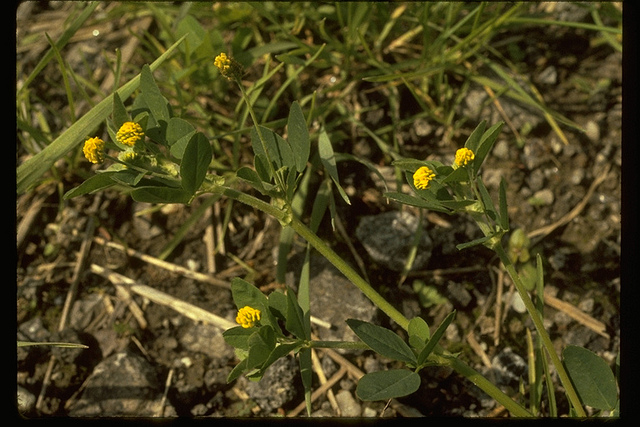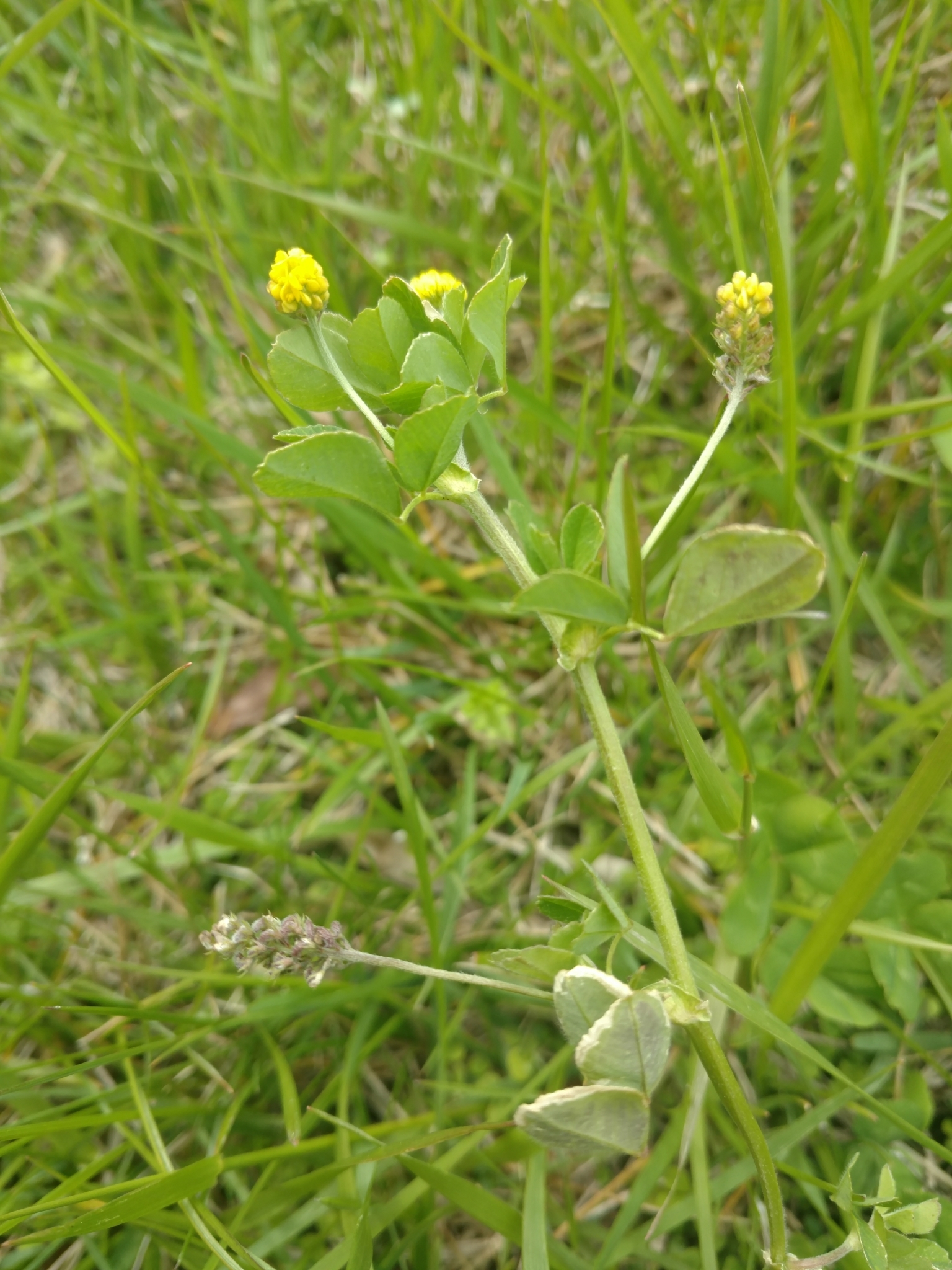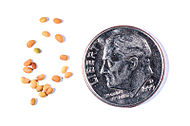Map Snapshot

























304 Records
Status
Black Medick is native to Europe, North Africa, and most of Asia. It was first introduced to the United States in the late 1700s or early 1800s. Since its introduction, Black Medick has spread and is present in all fifty states. In Maryland, Black Medick is common throughout the state. Blooming typically occurs from late May through August, but we have records in the MBP database of plants blooming in all months except February! The Smithsonian's Flora of Washington-Baltimore Special Collections has a specimen collected in Baltimore by Donnell Smith in 1880.
Description
Black Medick is very similar to Field Clover and care should be taken with identification. The leaflets of Black Medick typically have very small mucronate tips whereas the leaflets of Field Clover do not. The upper petals of the flowers of Black Medick are smooth while the upper petals of Field Clover are conspicuously grooved. Another easy way to differentiate between Black Medick and the Trifolium yellow clovers is that Black Medick produces black seeds that are easy to see once blooming is complete. The Trifolium yellow clovers have inconspicuous yellow/brown seeds that often fall to the ground instead of staying on the plant.
Where To Find
Black Medick is a common component of open road edges, fallow fields, and weedy areas across the state.
Seasonality Snapshot
Source: Wikipedia
| Medicago lupulina | |
|---|---|

| |
| Scientific classification | |
| Kingdom: | Plantae |
| Clade: | Tracheophytes |
| Clade: | Angiosperms |
| Clade: | Eudicots |
| Clade: | Rosids |
| Order: | Fabales |
| Family: | Fabaceae |
| Subfamily: | Faboideae |
| Genus: | Medicago |
| Species: | M. lupulina
|
| Binomial name | |
| Medicago lupulina | |
| Synonyms[1] | |
|
List
| |
Medicago lupulina, commonly known as black medick, nonesuch, or hop clover, is a plant of dry grassland belonging to the legume or clover family. Plants of the genus Medicago, or bur clovers, are closely related to the true clovers (Trifolium) and sweet clover (Melilotus). Like the true clovers, black medick has three leaflets and a small, yellow flower closely resembling those of lesser trefoil. Black medick belongs to the same genus as alfalfa.[2]
Names
[edit]The generic name Medicago is derived, via Latin medica, from Ancient Greek Μηδική (Mēdikḗ) "Median", because alfalfa was believed to have been introduced from the region of Media (now in Iran) in antiquity. The specific name lupulina means "wolf-like", and refers to the hop, or willow-wolf. Its scientific name is a translation of the common name hop clover (or hop-clover), which is also used for several members of the genus Trifolium.[3][4]
Also spelled "medic" or "meddick", the plant is known by a number of alternate names, including nonesuch, black nonesuch, black medic clover, hop clover, hop medic, black clover, black hay, blackweed, English trefoil, hop trefoil, and yellow trefoil. Some of these names are also applied to wildflowers of the related genera Trifolium and Melilotus.[5][6][7][8]
Description
[edit]Medicago lupulina is an annual or short-lived perennial plant,[9]: 168 growing each year from adventitious buds on the roots. Mature plants measure from 15 to 80 cm (6 to 31 in) in height, with fine stems often lying flat at the beginning of growth and later erecting. The leaves are compound, each with three oval leaflets, carried on a short petiole; the center leaflet usually has a longer petiole.[10][3] The leaflets are hairy, toothed toward the tip, and differ from those of the similar Trifolium dubium in that they end in a short point.[11]: 148 [9]: 175
Black medick has small (2–3 mm)[9] yellow flowers grouped in tight bunches (compact racemes). On larger plants the flower heads may reach 8 mm (5⁄16 in) or more.[3] The fruit is a single-seeded pod, 1.5 to 3 mm in diameter,[9] that does not open upon maturation, but hardens and turns black when ripe. Each pod contains a single amber-colored seed.[10]
Like other legumes, the roots of black medick contain nodules hosting nitrogen-fixing bacteria. Plants that survive for more than one year may develop a deep tap root.[10]
Distribution
[edit]A native of the old world, black medick is found throughout Europe, north Africa, the Near East, and most of Asia, including India, China, and Korea. It is naturalized in central Asia, Japan, South Africa, Australia, New Zealand, the United States, Canada, and much of South America.[5] Black medick is found throughout the United States, including Hawaii and Alaska.[6]
Black medick thrives in dry to moist, well-drained soils[12] containing sand, loam, or clay, and is a pioneer plant, often growing on disturbed ground. It grows in alkaline, neutral, and mildly acidic conditions. It does not grow in shady areas.[13] Black medick grows well in limestone soils and on coastal sand dunes, where it suffers less competition from the other plants, and as such is found on many islands, such as Taiwan, the Canary Islands, the Azores, and Madeira.[5] It is resistant to cold and can be found on mountains up to 1,800 meters.[citation needed]
Uses
[edit]Black medick is a good source of nectar for bees to use to make honey. It is frequently found in natural pastures, and may be planted in order to create artificial meadows, especially on dry land. The presence of black medick in large concentrations as a lawn weed may indicate that the soil is poor in nitrogen. However, because black medick and other clovers fix nitrogen in the soil, this deficiency can improve over time due to the presence of these plants.[5][14]
Black medick is sometimes used as a fodder plant. Its hardiness and ability to grow in poor soils, as well as its tendency to fix nitrogen in the soil, make black medick a good choice for pasturage, although its fodder value is limited.[5] It is grazed by sheep but is not very palatable to cattle.[15]
Similar plants
[edit]Black medick may be confused with other plants that have three leaflets and small yellow flowers, such as hop trefoil (Trifolium campestre), large hop trefoil (T. aureum), lesser hop trefoil (T. dubium), and yellow woodsorrel (Oxalis stricta).
Photographs
[edit]-
Flower
-
Leaves and flowers
-
Flowers wilting after pollination
-
unripe seed pods (green)
-
ripe seed pods (black)
-
seeds next to US dime for scale
-
Root with nodules
-
an entire uprooted plant
Illustrations
[edit]-
Color plate: M. arabica top; M. lupulina bottom.
References
[edit]- ^ "Medicago lupulina L." Plants of the World Online. Royal Botanic Gardens, Kew. Retrieved 18 July 2024.
- ^ Venning, Frank D. (1984), Wildflowers of North America, Golden Field Guide, St. Martin's Press
- ^ a b c "Medicago lupulina", Flora of Wisconsin, Wisconsin State Herbarium, University of Wisconsin–Madison, retrieved 14 June 2015
- ^ "Medicago lupulina", Plants of Wisconsin, Robert W. Freckmann Arboretum, University of Wisconsin–Stevens Point, archived from the original on 2013-05-10, retrieved 2015-06-15
- ^ a b c d e "Medicago lupulina", Germplasm Resources Information Network, Agricultural Research Service, United States Department of Agriculture, retrieved 14 June 2015
- ^ a b "Medicago lupulina", Integrated Taxonomic Information System, retrieved 14 June 2015
- ^ James Britten (1886), A Dictionary of English Plant-names, vol. 15, Richard Clay & Sons
- ^ Jacobson, Arthur Lee (1995), "Black Medick"
- ^ a b c d Stace, C. A. (2010), New Flora of the British Isles (Third ed.), Cambridge, U.K.: Cambridge University Press, ISBN 9780521707725
- ^ a b c "Black Medic", Forage Information System, Oregon State University, retrieved 14 June 2015[permanent dead link]
- ^ Blamey, M.; Fitter, R.; Fitter, A (2003), Wild flowers of Britain and Ireland: The Complete Guide to the British and Irish Flora., London: A & C Black, ISBN 978-1408179505
- ^ "Online Atlas of the British and Irish Flora: Medicago lupulina". Biological Records Centre and Botanical Society of Britain and Ireland. Retrieved 1 September 2018.
- ^ "Medicago lupulina", Plants for a Future, retrieved 14 June 2015
- ^ Clark, Andy (ed.), "Medics" (PDF), Managing Cover Crops Profitably (3rd ed.), Beltsville, Maryland: Sustainable Agriculture Network, archived from the original (PDF) on 2016-03-05, retrieved 14 June 2015
- ^ Heuzé, V.; Thiollet, H.; Tran, G.; Hassoun, P.; Lebas, F. (2018), "Black medic (Medicago lupulina)", Feedipedia, a programme by INRA, CIRAD, AFZ and FAO
External links
[edit]- Entry in the Linnean herbarium
- A mention in 1866 from the Correspondence of Charles Darwin: "Several years ago I protected Medicago lupulina from insects, & its fertility was much impaired, but not wholly prevented."
- WeedAlert.com's listing for Medicago lupulina
- Effect of Black Medic Cover Crop on N Supplying Power of Prairie Soils Archived 2019-02-04 at the Wayback Machine
- Wikispecies entry
